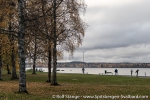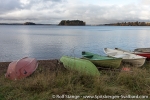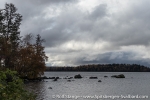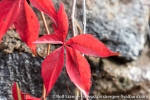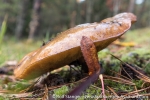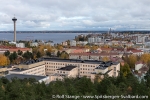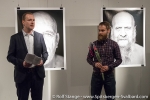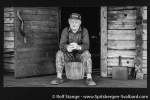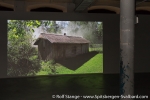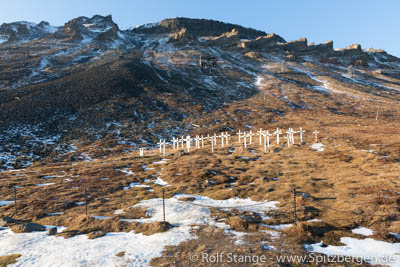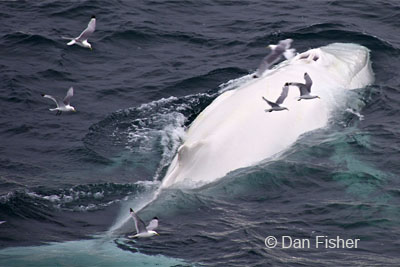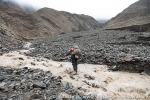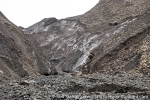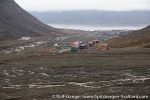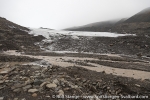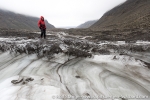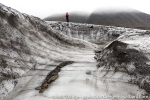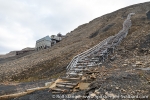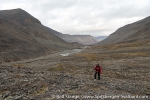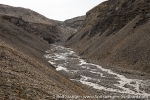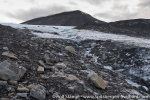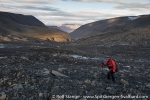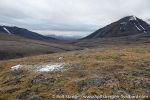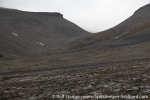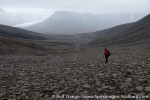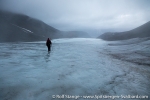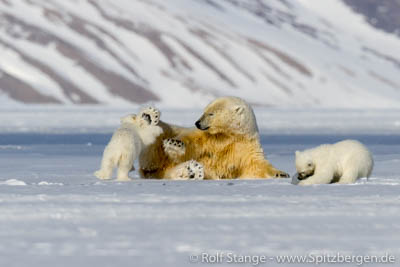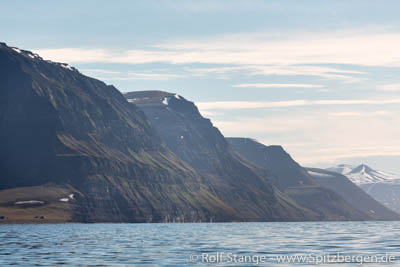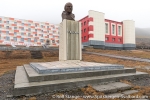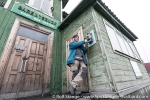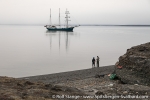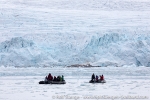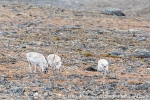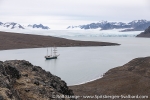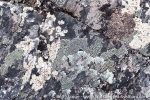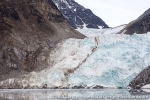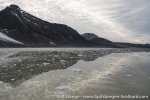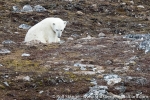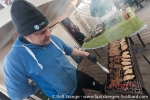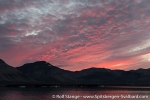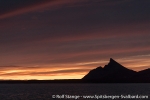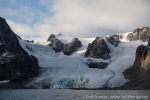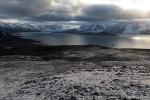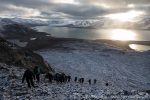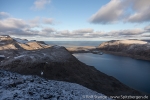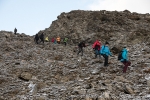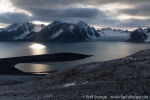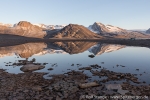-
current
recommendations- Liefdefjord
New page dedicated to one of Spitsbergen's most beautiful fjords. Background information and many photos.
- New Spitsbergen guidebook
The new edition of my Spitsbergen guidebook is out and available now!
- Liefdefjord
New page dedicated to one of Spitsbergen's most beautiful fjords. Background information and many photos.
Seitenstruktur
-
Spitsbergen-News
- Select Month
- April 2024
- March 2024
- February 2024
- January 2024
- December 2023
- November 2023
- October 2023
- September 2023
- August 2023
- July 2023
- June 2023
- May 2023
- April 2023
- March 2023
- February 2023
- January 2023
- December 2022
- November 2022
- October 2022
- September 2022
- August 2022
- July 2022
- June 2022
- May 2022
- April 2022
- March 2022
- February 2022
- January 2022
- December 2021
- November 2021
- October 2021
- September 2021
- August 2021
- July 2021
- June 2021
- May 2021
- April 2021
- March 2021
- February 2021
- January 2021
- December 2020
- November 2020
- October 2020
- September 2020
- August 2020
- July 2020
- June 2020
- May 2020
- April 2020
- March 2020
- February 2020
- January 2020
- December 2019
- November 2019
- October 2019
- September 2019
- August 2019
- July 2019
- June 2019
- May 2019
- April 2019
- March 2019
- February 2019
- January 2019
- December 2018
- November 2018
- October 2018
- September 2018
- August 2018
- July 2018
- June 2018
- May 2018
- April 2018
- March 2018
- February 2018
- January 2018
- December 2017
- November 2017
- October 2017
- September 2017
- August 2017
- July 2017
- June 2017
- May 2017
- April 2017
- March 2017
- February 2017
- January 2017
- December 2016
- November 2016
- October 2016
- September 2016
- August 2016
- July 2016
- June 2016
- May 2016
- April 2016
- March 2016
- February 2016
- January 2016
- December 2015
- November 2015
- October 2015
- September 2015
- August 2015
- July 2015
- June 2015
- May 2015
- April 2015
- March 2015
- February 2015
- January 2015
- December 2014
- November 2014
- October 2014
- September 2014
- August 2014
- July 2014
- June 2014
- May 2014
- April 2014
- March 2014
- February 2014
- January 2014
- December 2013
- November 2013
- October 2013
- September 2013
- August 2013
- July 2013
- June 2013
- May 2013
- April 2013
- March 2013
- February 2013
- January 2013
- December 2012
- November 2012
- October 2012
- September 2012
- August 2012
- July 2012
- June 2012
- May 2012
- April 2012
- March 2012
- February 2012
- January 2012
- December 2011
- November 2011
- October 2011
- September 2011
- August 2011
- May 2011
- April 2011
- March 2011
- February 2011
- January 2011
- December 2010
- November 2010
- September 2010
- August 2010
- July 2010
- June 2010
- May 2010
- April 2010
- March 2010
- February 2010
- November 2009
- October 2009
- August 2009
- July 2009
- June 2009
- May 2009
- April 2009
- March 2009
- February 2009
- January 2009
- December 2008
- November 2008
- October 2008
- August 2008
- July 2008
- June 2008
- May 2008
- April 2008
- March 2008
- February 2008
- April 2000
- Select Month
-
weather information

| THE Spitsbergen guidebook |
Home →
Yearly Archives: 2017 − News & Stories
Tampere – 13th October 2017
Fri
13 Oct
2017
You may have noticed that this is about Tampere, which is not in Spitsbergen. It is actually in Finland! Far down south!
Yes, true. But those who have been with Rolf Stange and Alexander Lembke in Spitsbergen in recent years, on the sailing ship Antigua or in Pyramiden, will know that there is a connection. If you have shared some chocolate with Alex on the tundra or a beer in the evening, then you will have heard Alex talking about the Finnish sauna. He has been working intensely with it for years. Of course also enjoying the very pleasant practical aspects, but mainly researching its cultural and historical sides. One preliminary result of this never-ending project is an exhibition that was not about to be opened in Tampere. (For some impressions of the actual opening, click here – Born in Sauna).
Gallery – Tampere – 13th October 2017
- gallery anchor link: #gallery_1316
Click on thumbnail to open an enlarged version of the specific photo.
I could, of course, not miss the opportunity to take the trip to Finland. Before the actual opening, I still had a little bit of time for an excursion into the famous Finnish landscape of forests and lakes. It was a bit exotic for me: lots of trees! But you get used to it. So before we get to the actual exhibition, we have got some impressions from the Finnish forests. There was no time for longer trips, it is all from a walk close to Tampere.
Sauna Syntyneet – Born in Sauna – 13th October 2017
Fri
13 Oct
2017
We are still in Tampere in Finnland and we are getting to the centerpiece of the trip to the country of forests, lakes and – sauna. This is what it was all about. After a long time of intense work and preparations, Alexander Lembke could proudly open his exhibition on Friday the 13th (that should bring some luck!).
Of couse you don’t have to show the people in Finland what a sauna looks like. There are about 5.5 million Finns, and they have got several million saunas. If you live in Finland, then you know what a sauna looks like. If you live on the Orkney Islands, then you know what the sea looks like.
Hence, Alex could fokus on his main subject: Sauna Syntyneet – Born in Sauna. Large portraits cover almost a century of Finish life and history with people who were born in a sauna. Not just by chance, as one might be misled to believe (unless you really know Finland), but because the sauna was and sometimes still is considered an appropriate place for that kind of thing, for practical and cultural reasons. Today, most Finns are born in modern hospitals, but it is still not unheard of that someone sees the light of the world in a sauna. Of course not one of these modern wellness things that most non-Finnish people consider a sauna, but a private one that has been family property over generations.
Institutions including the Goethe-Institute, the town of Tampere and th Finnish Sauna Association have supported the exhibition and were represented at the opening, giving it an appropriately worthy frame with a couple of speaches. Some of those whose portraits are forming the core of the exhibition were also present.
Gallery – Sauna Syntyneet – Born in Sauna – 13th October 2017
- gallery anchor link: #gallery_1318
Click on thumbnail to open an enlarged version of the specific photo.
During the later course of the evening, there was an excursion to the object of science and passion: a sauna. A real Finnish one, actually the oldest public sauna that is still in use in Finland! I did not take any photos there, that is something that you just don’t do (unless you are Alex and you have spent a lot of time to know those who are involved). So I can only recommend to you to take a trip to Finland and get some real sauna experience! It is more than worth it!
Coal mining in Sveagruva is history
The Norwegian government in Oslo has decided that the coal mine in Lunckefjellet near Sveagruva will not come into productive operation. The mine was opened in 2014 but since then, it has only been driven in standby mode.
The mining company Store Norske has suffered badly from low prices on the world markets for coal for years (see for example Store Norske bailout, May 2015). Near 300 employees had to leave, only about 100 are left.
These remaining ones will not be able to enjoy their jobs for many years either, since Norwegian Secretary of State for Trade and Industry Monica Mæland anounced on October 12, 2017, that the government will not support renewed productive mining in Sveagruva, namely Lunckefjellet. Further production without financial support from Oslo is not possible. The government is also the owner of the mining company Store Norske. Neither the government nor Store Norske are interested in keeping the current standby operation upright.
As a result, the next couple of years will see the phaseout of mining activities in Sveagruva and a big general cleanup of the place. This will, at least, keep most of today’s employees in Store Norske busy.
It is also said that the government does not plan major alternative activities in Sveagruva, such as tourism or science. It is, however, not excluded that some buildings may be used for these purposes.
The decision does not affect coal mining in mine 7 near Longyearbyen, which is taking place on a comparatively small scale to supply the local power plant and minor volumes for export.
Soon history: Norwegian coal mining in Svalbard.
Source: NRK
Spitsbergen-calendar 2018: November introduced
The next image from the Spitsbergen calendar 2018 is the month November. It shows a small group of Spitsbergen reindeer. These shed their antlers once every year. The exact time is different for males and females. It also varies individually, to some degree.
This small herd of reindeer shows all variations in their antlers: one does not have antlers at all, one dones only have one half and the third one has got the full set of antlers!
The photo shows reindeer in a winter environment at Diabasodden in Sassenfjord. In the early winter, reindeer have got their fat reserves, next to the meagre vegetation that is mostly hidden under snow. Later, when the fat reserves are used up and the tundra is still under snow and ice, the risk from starvation will increase strongly.
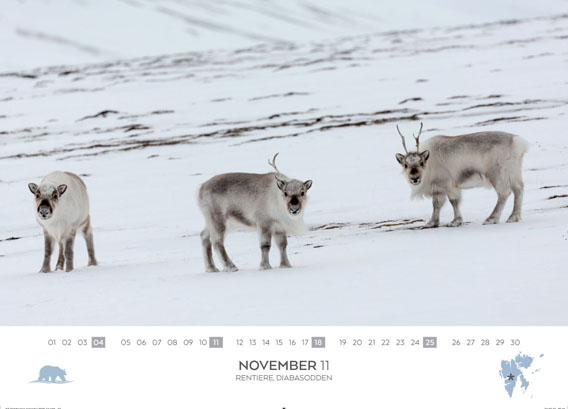
Spitsbergen-Calendar 2018: November. A group of Spitsbergen-reindeer with different variations of their antlers.
Longyearbyen cemetery may be moved because of avalanche risk
The cemetery of Longyearbyen has been in a calm part of the valley Longyeardalen for about a century, between the church and Huset, the old town meeting place. It is still an active cemetery, the last burials were in 2013 and there may be more in the future. Only urn burials are allowed, however.
The location of the cemetery is calm, but maybe not calm enough in the long term. The steep mountain slopes nearby have produced avalanches in recent years, mostly landslips after periods of rain, which have reached the terrain around the cemetery. In the last summer, even the road between the church and Huset was closed for prolonged periods. It is probably only a question of time until the cemetery itself is hit and badly damaged.
This is a scenario which Longyearbyen church with priest Leif Magne Helgesen are not willing to accept. Helgesen has taken initiative and started a debate which may lead to a relocation of the cemetery. It is a place of peace and dignity, for which many people have strong feelings, according to Helgesen. He reasons that it would accordingly be irresponsible to leave the cemetery in a place where it may suffer bad damage.
First meetings with authorities like the Sysselmannen, who is responsible for monument conservation, and the local adminstration have taken place. Authorities in Longyearbyen have experience with moving and securing graves from historical graves that are threatened by coastal erosion. Moving a whole cemetery would, however, be a project of an entirely different scale. Also relatives will have to be involved.
A new location would naturally be near the church, which is a quiet part of Longyearbyen and has areas that are not at risk from avalanches and landslides.
The cemetery in Longyearbyen may be moved due to the risk of landslides and avalanches.
Source: Svalbardposten
Spitsbergen-calendar 2018: the stories behind 2 months
The September-page of our Spitsbergen-calendar 2018 …
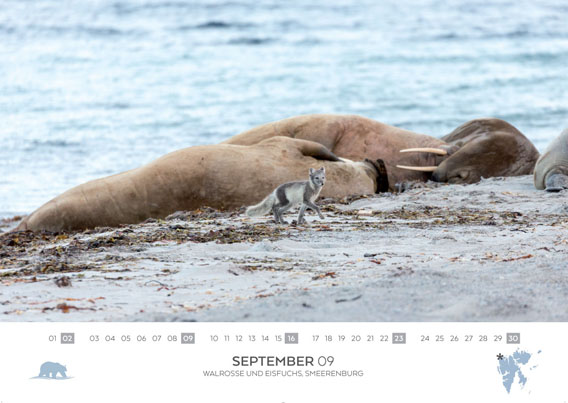
Spitsbergen-Calender 2018: September. Walrusses and polar fox.
… shows a group of walrusses on the beach at Smeerenburg on Amsterdamøya doing what walrusses do best: sleeping and digesting mussels. While we keep a respectful distance of a good 30 m in order not to disturb the walrusses during their nap, a cheeky polar fox which does not care about regulations and distances runs directly next to the walrusses! Who could not care less about the polar fox.
The polar fox left as quickly and unexpectedly as it came, and only this snapshot remains from the memorable encounter.
And the October-page …
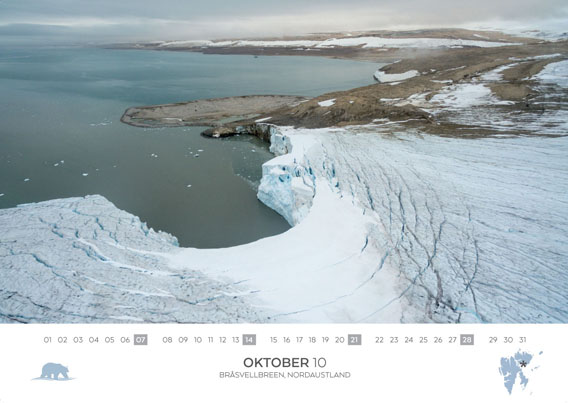
Spitsbergen-Calender 2018: October. Bråsvellbreen, Nordaustland from a bird’s eye view.
… shows Bråsvellbreen. This mighty glacier belongs to the ice cap of Austfonna on Nordaustland. The size is overwhelming, the ice cap has a total area of about 8500 square kilometres! The glacier Bråsvellbreen is only a small part of that. It is well-known for the waterfalls that are cascading down the ice cliff during the melting season. Here, we see it from a bird’s eye perspective!
Click here for more information about the Spitsbergen calendar 2018.
White humpback whale again seen in Svalbard
White humpback whales are a very rare phenomenon. Globally, scientists know of three individuals. Two of them live in Australian waters and a third one in the north Atlantic. The latter one has recently been seen again for the first time in years. First sightings date back to 2004 and 2006, then near the north Norway coast. In August 2012, a white humpback whale was sighted several times east of Spitsbergen. It was most likely the same animal as in 2004 and 2006. No photos are known from those early sightings, but in 2012, a number of amazing shots were taken. Especially noteworthy are those taken by Dan Fisher, mate on the sailing ship Antigua, from the mast of the ship. Due to the high perspective, almost the whole animal can be seen on the photos.
Humpback whales live in all of the world’s oceans. They are usually mostly dark grey to black. The bottom side and parts of the fluke and flippers are partly white. The exact pattern can be used to identify individuals, just like the fingerprint of humans.
Completely white humpback whales are very rare. The unusual colour is usually due to leucism, a partial loss of pigmentation which leads to pale or white colour. Only one of the two white humpback whales in Australia is actually an albino.
Now, there has been a sighting of a white humpback whale in the north Atlantic, the first one since 2012. The whale was seen in late September by scientists on board the research vessel Johan Hjort in eastern Svalbard. This area is often frequented by humpback whales at this time of the year.
White humpback whale in Hinlopen Strait, photographed on August 11 2012 by Dan Fisher.
Source: Havforskningsinstituttet
Longyearbreen – 29th September 2017
Fri
29 Sep
2017
We pay another little visit to Longyearbreen. How great is it to have this kind of playground so close to town? Meltwater is rushing down the channels, it is well worth to look for fossils in the moraine, and then there is ice, ice, ice. Also on the glacier, there are meltwater streams in deeply incised channels, which sometimes disappear down into black holes. The polished surface of the ice shows beautifully alternating patterns of clear, blue ice and dark layers with stones and (natural) dirt.
Gallery – Longyearbreen – 29th September 2017
- gallery anchor link: #gallery_1314
Click on thumbnail to open an enlarged version of the specific photo.
A lovely way to finish the time that we can still, at least in a wider sense, call the arctic summer. Now, this arctic traveller will return to the office. Also there, mountain ranges have piled up on the rather recent geological history 🙂
Endalen – 27th September 2017
Wed
27 Sep
2017
The following days in and around Longyearbyen show how much luck we have had on the last trip with Antigua. Now, we don’t see the smallest bit of blue sky for days on end, and usually only the lower half of the mountains surrounding us. The sun does not rise high anymore, and as it is constantly hidden behind the cloud cover, it seems pretty dark even at daytime. It is just over 4 weeks ago that the sun was shining bright for 24 hours a day, and in just about 4 weeks from now we won’t see any of it at all for some time!
Good days altogether to get things done inside. And there is of course more than enough to do after months out in the field 🙂 but still, we just have to get out, the tundra is calling, the lonely valleys … you don’t have to venture far from Longyearbyen to find natural beauty, silence and solitude. You don’t always have to go as far as Hinlopen Strait. Endalen and Fardalen have got their own charm.
It is pretty mild, with temperatures well abov the freezing point, so the rivers still have a lot of water. In other years, you could cross even larger rivers in hiking boots without getting wet feet when the frost was strong enough already at this time of year, but not this time. So we have to find our way, cross some meltwater streams and find a way around the waterfall in upper Endalen by climbing up the moraine of Bogerbreen. A huge landscape of stones, mud and ice, a real ice age world. You could spend a lot of time here, discovering amazing stuff, enjoying the ice, looking for fossils, but the days are getting shorter while the way does not. It is more than 20 km for today.
Gallery – Endalen – 27th September 2017
- gallery anchor link: #gallery_1312
Click on thumbnail to open an enlarged version of the specific photo.
Most people will know Longyearpass with its steep slope that is leading from upper Longyearbreen down to Fardalen from the winter season. Many snow mobile groups take this route then, for example on the way to or from Barentsburg. The slope can be challenging, especially when there is soft snow and poor visibility, and it has brought snow mobile drivers regularly into troubles. Pieces of torn V-belts and other debris are silent witnesses of those events. It may not seem much of a problem when you drive past it at speed, but in the summer, the plastic seems – well, it is! – very much out of place and quite disgusting. Well, not too many people come here in summertime, although it is just about 6 km from Nybyen, the nearest part of Longyearbyen.
There is still Longyearbreen between Fardalen and Longyearbyen. Its icy surface is blank as a mirror now after the rain that we have had the last days, so we are more than happy that we carried the crampons all the way. Without them, it would be very dangerous to attempt the hike down the glacier now, but with them, it is actually great fun. During the last part of it, the clouds are coming down, together with the darkness that is setting in, so it is hard to see the way and the moraine with its meltwater streams actually looks a bit threatening. Good to know where to go. The last meltwater river, coming down from Larsbreen, is almost big enough now to give us a footbath in our hiking boots, but who cares, we have reached the road and soon, the frying pan is getting hot on the cooker …
Several polar bears observed near settlements
Several polar bears have been seen near Longyearbyen and other settlements in the past few weeks.
Polar bears look cute, but can be nasty when they are looking for food
One of the bears – a 17-year-old male – had to be anesthetized and transported by helicopter to Nordaustlandet in the north-east of Spitsbergen, after devastating several huts at Kap Laila River between Longyearbyen and Barentsburg on 15 September. Polar bear expert Jon Aars from the Norwegian Polar Institute confirmed, that this was already the bears second flight with a helicopter. The polar bear was marked as a cub and already registered in 2001, when he destroyed a hut together with his brother and mother. The mother was also observed later in similar burglaries.
This is not an unusual behavior for a polar bear, says Jon Aars. Some polar bears even seem to have specialized in hut burglaries. But to stun the polar bears and fly them out can just be a short-term solution. Last year in April a polar bear from Longyearbyen was flown to the island of Nordaustland several hundred kilometers away. Only one year later he was back at the Isfjorden.
At the beginning of September, a female polar bear with two cubs was observed at Revneset – a few kilometers north of Longyearbyen. Three attempts have already been made to hunt them away by means of a helicopter. The three bears returned twice after a few days and reappeared near Longyearbyen. After the third attempt, the bears have not yet been seen again.
Another polar bear with two cubs was observed near Svea and several bears were seen near Isfjord radio at Kapp Linné the last month.
The fact that so many polar bears appear in the vicinity of human settlements in such a short time does not occur too often, but is probably coincidence. Jon Aars believes that such visits could occur more often in the future, as polar bears have been protected for many years. Genetic research shows that polar bears tend to visit the same areas for several generations. People in Longyearbyen will probably have to get used to frequent visits of polar bears. Or the other way around.
Polar bear mum with cub
Source: Svalbardposten
Italian lost and found
After the search after a sailing boat last week, SAR (search and rescue) forces from Sysselmannen and Red Cross were, only a few days later, again out on a major mission. On Saturday afternoon at 16.20 hours, the local hospital in Longyearbyen received a call from an Italian person who was stuck on a steep slope and not able to move. The man said that he could see the airport, without giving further details about his position. Next to lack of local knowledge, language difficulties may have come in here. He finished the conversation without leaving his name or contact details, so it was not possible to contact him again later.
Hence, SAR forces had to move out in darkness and strong winds. The Red Cross searched Platåberget, which is situated near the airport, with about 30 people. Finally, a light signal was seen on a steep slope above the sea on Fuglefjella, between Bjørndalen and Litle Bjørndalen. Strong winds prevented SAR forces from reaching the area by helicopter, so the Red Cross had to walk a longer distance to get to the site. Shortly after 5 a.m. the man was finally rescued; he had spent at least about 13 hours in his position. All involved got back to Longyearbyen thereafter in good condition.
The incident shows how important it is to have at least basic local knowledge and means of orientation as well as the ability to make a proper emergency call if worst comes to worst. Next to some knowledge of a language used locally, or at least a contact who can provide that, this involves the correct local emergency contacts (the Sysselmannen), name and phone number. The man was in very steep terrain, in darkness, strong wind and without local knowledge and orientation. The incident provides a negative example in several ways.
The steep slope of Fuglefjella between Bjørndalen and Litle Grumantdalen on a nice summer day, where an Italian tourist was rescued early Sunday morning in darkness and wind.
Source: Svalbardposten
Isfjord – 21st September 2017
Thu
21 Sep
2017
This days comes as a contrast, showing us how it could have been much more often: grey and wet. We have been very lucky with many good days with great light!
The rather dark light and weather fits the desolate atmosphere of Barentsburg, where we spend the morning. The russian settlements have been part of Spitsbergen for the best part of a century!
Later, we try our luck finding orcas and polar bears that have recently been seen in Isfjord. No luck with the wildlife, so we make a short, quiet final landing not far from Kapp Wijk in Dickson Land, to say goodbye to the arctic tundra.
- gallery anchor link: #gallery_1293
Click on thumbnail to open an enlarged version of the specific photo.
A few hours later, we are alongside in Longyearbyen, and a great trip comes to an end.
Krossfjord – 20th September 2017
Wed
20 Sep
2017
Krossfjord is such a huge area with many side bays! As we do only have one day here, we have planned the day according to a rather strict schedule, just for the contrast, against our usual habits. We manage to have a look at the mighty Lilliehöökbreen and then to visit a German war weather station, all during the morning. The afternoon starts in a bay further east, with rugged alpine mountain scenery and a wild glacier that is cascading down over steep rockwalls. Later, we find a polar bear resting on the tundra. It seems to be quite tired, but it is sitting up occasionally, so everybody can get some good views. We spend some time with this observation, so we skip a final landing of this days. We rather enjoy the fantastic BBQ buffet that Sascha and his team have created for us, and the amazing evening light that the sun, which is already under the horizon at this time, paints on the clouds.
Later, we lift anchor and set course for Isfjord.
Gallery – Krossfjord – 20th September 2017
- gallery anchor link: #gallery_1291
Click on thumbnail to open an enlarged version of the specific photo.
A morning full of worries, an afternoon full of joy – 19th September 2017
Tue
19 Sep
2017
The morning started with a message that caused great concern. The Norwegian search and rescue service had received an emergency signal from a sailing boat that had came into trouble yesterday during the storm. Helicopters had searched the area already last night, a coastguard vessel was approaching. Nobody had heard anything from the sailing boat so far, so the worst had to be feared. All vessels in the area – not that it were that many – were asked to assist, and so we did without any hesitation. The coastguard asked us to search Fuglefjord and Holmiabukta, and so we did with feelings of fear.
Then came the information from the coastguard that the boat had been found »in good condition«, the SAR mission was over. No further information. All souls well! Very pleased to hear that!
We turn around and head for Raudfjord, where we spend a lovely hour in the late morning in Hamiltonbukta. In the afternoon, September shows what it can do on a good day. Deep sun over rugged mountains, warm light on reddish-brown rocks. An amazing afternoon!
Gallery – Raudfjord – 19th September 2017
- gallery anchor link: #gallery_1288
Click on thumbnail to open an enlarged version of the specific photo.
Sailing boat lost and found
There have been strong winds up to storm force in northern Spitsbergen yesterday (Monday). Two smaller boats seem to have gotten into potentially serious difficulties. Emergency signals have been triggered and search and rescue forces are in the area with helicopters and coast guard ships.
SV Antigua (where the present author is on board) is also in the area, but we did not have more problems than some cases of seasickness during our sailing passage yesterday. So SV Antigua is NOT affected by any serious problems.
Update: after several hours searching in the northwest of Spitsbergen, where also several tourist ships including SV Antigua assisted, the boat was on Tuesday found „in good condition“. The SAR mission was officially abandoned by the coast guard. It was later stated that it was a local boat from Longyearbyen. The emergency signal position was from Magdalenefjord, while the boat was found in Wijdefjord, almost 100 km away as the ivory gull flies. The emergency signal had been trigger automatically without the crew being aware of it; probably, the emergency beacon was lost in heavy seas and triggered itself.
Wind force 8 on Monday at the north coast of Spitsbergen. Photo © Alexander Lembke.
News-Listing live generated at 2024/April/23 at 23:52:37 Uhr (GMT+1)

